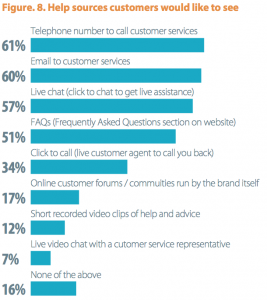By 2020, customer experience will matter more than price and product in determining consumer purchases. A strong and sobering fact for most companies. Thanks to the rise of the digital world, customers now have more choices when it comes to brand selection. Following a bad experience with a company, consumers are able to go online and spread the word about their poor experience. And this experience soon leads the way in which other consumers will make their purchase decisions. Because of this, many forward-thinking businesses are focused on cultivating an environment leading to positive customer experiences.
Deciding to pay more attention to improving customer service, many contact center decision makers are embracing the fact that customer experience needs a holistic approach. Customers no longer tolerate companies living and acting in silos. In fact, an omni-channel customer experience stands out as one of the top trends affecting how customers perceive their interactions with a specific company. A holistic approach entails achieving synergies among the multiple tools that companies use to serve customers, especially the contact center tools. Among these, there are two main factors that count: one is a strong and versatile cloud communications platform and the other, making sure this cloud communications platform has a modern application programming interface (APIs). That’s because modern APIs allow for easy integrations among tools.
Firstly, cloud communications platforms such as VoipNow, can be used successfully for contact centers. That’s because no matter how many customers desire new tools to communicate with a company, voice is still no 1. And VoipNow’s core is represented by hosted PBX and VoIP, bundled with Unified Communications and smart contact center functionalities. In fact, recent research by eConsultancy indicates that 61 percent of customers desire voice support for their problems. Customers still prefer speaking with an agent on the phone whenever a problem or concern pops up, so voice is still the primary communications vehicle for your target audience.
Additionally though, customers are increasingly opting to receive support via video calls and through social media channels. Therefore, the ways in which customers prefer to be helped are changing, and contact centers are moving toward delivering what is truly an omni-channel experience.
This move towards omni-channel can only be supported through synergies between multiple tools. There is no single, complete, customer service tool. Coming back to our second factor, you need a modern API. By deploying strong cloud communications solutions featuring advanced APIs, various applications work seamlessly together, enabling agents to access information the moment they need it. Additionally, since data is accessible from a centralized hub, decision makers can say goodbye to the days of fragmented information; departments work in harmony and businesses realize the effect of the resulting synergies. Together, this functionality helps ensure that a personal touch is delivered during each customer interaction. And customization stands out as another customer experience trend turning mainstream. In a future blog post, we’ll talk more about the trends affecting customer service and how cloud communications platforms can support them.
In conclusion, to be prepared to seamlessly handle the move towards a holistic customer service, service providers and business owners will want to look for cloud communications platforms with modern APIs that can integrate with contact center software tools, CRM software and other business applications. That way, agents are able to make use of the wealth of customer-specific information at their fingertips and create the kind of customer experience that is necessary in today’s digital world.

Post A Reply